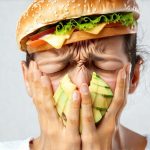Our relationship with food is profoundly complex, extending far beyond mere sustenance. It’s shaped by cultural norms, emotional associations, and deeply ingrained personal experiences. Often overlooked in discussions about digestive health is the significant role our past encounters with food – both positive and negative – play in how we experience eating and digestion today. These aren’t simply memories; they are formative events that can subtly (and sometimes dramatically) influence physiological responses to food, leading to a range of reactions from mild discomfort to full-blown digestive distress. Understanding this interplay between past experiences and present symptoms is crucial for anyone seeking holistic well-being.
The way our brains process food isn’t limited to taste or texture; it involves an intricate network connecting the senses, emotions, and memories. A negative experience – a bout of food poisoning as a child, a stressful dining situation, or even repeated pressure around eating – can create a learned association between specific foods or eating environments and feelings of anxiety, fear, or nausea. This association isn’t rational; it’s deeply embedded in the subconscious mind and can trigger physiological responses before we even take the first bite. These responses might manifest as changes in gut motility (speeding up or slowing down digestion), increased stomach acid production, or heightened visceral sensitivity – making us more aware of normal digestive processes as uncomfortable symptoms. Consequently, a seemingly harmless meal could become a source of worry and physical discomfort, perpetuating a cycle of negative associations. Understanding food texture is key to this process.
The Neuroscience of Food Memories & Digestive Response
The brain’s limbic system is central to this process. Specifically, the amygdala – responsible for processing emotions like fear and anxiety – and the hippocampus – involved in memory formation – work together to create strong emotional memories around food. When we encounter a food associated with a past negative experience, the amygdala triggers a stress response, activating the sympathetic nervous system (the “fight-or-flight” response). This leads to physiological changes designed to prepare us for danger, even if the “danger” is simply a remembered unpleasant sensation. Simultaneously, the hippocampus retrieves the memory of the event, reinforcing the emotional association and increasing the likelihood of similar reactions in the future. – This explains why a whiff of a particular smell or sight of a certain food can instantly transport us back to an uncomfortable experience, triggering physical symptoms even years later. It may be helpful to explore digestive enzyme tests to understand underlying sensitivities.
Furthermore, the gut-brain axis – the bidirectional communication pathway between the digestive system and the brain – amplifies these responses. The gut is often called our “second brain” because it has its own nervous system (the enteric nervous system) capable of independent function. Signals from the brain can directly influence gut motility, secretion, and even immune function. Conversely, signals from the gut – related to nutrient absorption, inflammation, or microbial activity – travel back to the brain, influencing mood, behavior, and cognitive function. – A negative food experience creates a feedback loop: anxiety leads to digestive upset, which reinforces anxiety, creating a vicious cycle. This explains why many people with functional gastrointestinal disorders (like IBS) report experiencing symptoms in response to stress or emotional triggers. The influence of gut microbiota also plays a significant role here.
The Role of Conditioning & Learned Associations
Classical conditioning plays a significant role in developing negative food associations. Think back to Pavlov’s dogs: they learned to associate the sound of a bell with food and subsequently salivated at the sound alone, even without the presence of food. Similarly, we can become conditioned to associate certain foods or eating environments with unpleasant experiences. For example, if you experienced severe nausea after eating pizza during a bout of food poisoning, your brain may create an association between pizza and illness. Even years later, smelling or seeing pizza could trigger feelings of nausea. – This isn’t about consciously remembering the event; it’s an automatic physiological response based on learned associations. Understanding how food additives can contribute to these reactions is also important.
Beyond classical conditioning, operant conditioning also contributes to these patterns. Operant conditioning involves learning through consequences – behaviors that are rewarded are more likely to be repeated, while those punished are less likely. If avoiding a specific food reduces anxiety or discomfort, you’re essentially reinforcing the avoidance behavior. This can lead to increasingly restrictive diets and heightened fear of certain foods. – It’s important to distinguish between genuine food intolerance/allergy and conditioned aversion; one involves a physiological reaction, while the other is primarily psychological.
Identifying & Challenging Negative Food Beliefs
A critical step in addressing these issues is identifying the negative beliefs and associations surrounding food. This can involve self-reflection or working with a therapist specializing in eating psychology. – Ask yourself: “What thoughts and feelings do I experience when I think about this food?” “What past experiences are linked to this food?” “Do I associate any foods with guilt, shame, or anxiety?”. Often, these beliefs are deeply ingrained and may not be immediately apparent.
Once identified, challenging these negative beliefs is essential. This doesn’t mean forcing yourself to eat foods that trigger anxiety, but rather questioning the validity of those associations. – For instance, if you associate ice cream with feelings of guilt, explore why: Is it based on a restrictive diet? A fear of weight gain? Challenging these underlying beliefs can help reduce emotional reactivity around food. Cognitive Behavioral Therapy (CBT) and Acceptance and Commitment Therapy (ACT) are effective therapeutic approaches for addressing negative food beliefs and developing healthier coping mechanisms.
Rebuilding a Positive Relationship with Food
Breaking the cycle of negative associations requires conscious effort and a focus on creating positive experiences around food. This isn’t about ignoring past trauma, but rather reframing it and building new, healthier connections. – Begin by focusing on foods that bring you joy and comfort, without guilt or restriction. Practice mindful eating: pay attention to the taste, texture, smell, and appearance of your food, savor each bite, and notice how it makes you feel.
Creating positive dining experiences is also crucial. – Eat in a relaxed environment, surrounded by people you enjoy being with. Avoid stressful situations or conversations during meals. Experiment with new recipes and flavors, focusing on the enjoyment of cooking and eating. Gradually reintroduce foods that have been associated with negative experiences, starting with small amounts and paying attention to your body’s response. – This process should be slow and gentle, prioritizing self-compassion over perfection.
Finally, remember that seeking professional support can be invaluable. A registered dietitian or therapist specializing in eating psychology can provide personalized guidance and support as you navigate this journey. They can help you identify underlying patterns, challenge negative beliefs, and develop strategies for rebuilding a positive relationship with food and your body. – It’s important to approach digestive health holistically, recognizing the interconnectedness of mind, body, and emotions. By addressing past experiences and cultivating mindful eating habits, you can unlock a healthier and more enjoyable relationship with food. Understanding how microbial imbalance impacts these processes is also vital for overall health. And don’t underestimate the impact of diet on athletic recovery.


















